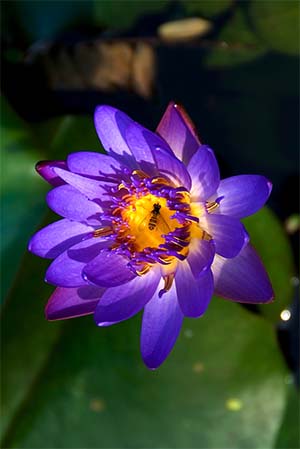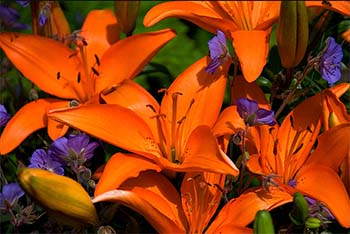Spring has just come to the Northern Hemisphere. Flowers are blooming and the colors are spectacular. Each spring more and more travelers tour famous gardens to photograph and drink in their magnificent blooms and take great spring flower photography.
Around Philadelphia, traffic to Winterthur and Longwood Gardens dramatically increases in the spring. In the Netherlands it’s time to visit Keukenhof Gardens; just outside of Los Angeles, the amazing Huntington Botanical Gardens; and also in Scotland, Castle Kennedy and Gardens. They are all exquisite for spring flower photography.
This spring, travel photographers will pull out their macro lenses to get close-ups of garden blooms. If you don’t have an expensive SLR (single lens reflex), or DSLR (digital single lens reflex), with extra care, a good point & shoot camera can grab the shots, too.

If you have a quality SLR or DSLR with a macro lens attached, you will have a great advantage over other cameras to get that sharp close-up image. If you have a tripod you’ll have an even greater advantage.
That being said, here are some tips for spring flower photography:
Compose your photo carefully, as the subject’s background can make or break a close-up picture. Use the background to complement the main subject, not detract from it.
Consider opening up the lens’ aperture to reduce depth of field. In the photo above, on the right, taken at the Morris Arboretum, note the background is not in focus, while the plant is in sharp focus, making the plant stand out, almost in 3D. This was accomplished by opening the lens to f/5.6.

Steady your camera. Close-up shots exaggerate camera shake. To reduce camera movement, which is most noticeable in natural light pictures, use a tripod. For the photo of the bee in the lotus, I used a tripod when I took it at the Garden of Eden Arboretum and Botanical Garden in Maui.
Another way to reduce or eliminate the effect of camera shake is to use your camera or lens’ image stabilization or vibration reduction ability. Please remember, however, while they can really help, they are no substitute for using a quality tripod.
Set your digital camera’s image quality to RAW, if your camera has it. The RAW setting gives you more exposure latitude than JPEG (JPG). In close-up photography you try to record tiny details, so save the image at the highest quality available in your camera. If you can’t save images in RAW, use the highest quality JPEG setting, such as “superfine, large.”
Set your digital camera’s ISO (sensor sensitivity) to the lowest possible setting, according to conditions, to reduce noise and artifacts which are troublesome in macro photography. For film cameras, use film with a low ISO rating. An ISO of 100 is ideal.

Look for different viewpoints. Different angles and shooting distances can greatly affect your macro shot. Sometimes moving just a fraction of an inch can provide a completely different view of the same subject when doing spring flower photography. Experiment with color and black & white.
Many point and shoot cameras have a macro mode. Use it. Macro mode allows your camera to focus on a subject closer to your lens than normal. Most macro modes will set your camera to choose a larger aperture, so that your subject is in focus but the background is not.
I love visiting gardens myself, and taking hikes through parks and forests while taking close-ups of flowers. I hope you enjoy bringing home great plant, flower, and insect photos from your spring flower photography trips.
Ned Levi is a long time professional photographer with a passion for wildlife and travel photography. You can view some of Ned’s travel and other photos at NSL Photography, or get more travel photography information on his Blog.
After many years working in corporate America as a chemical engineer, executive and eventually CFO of a multinational manufacturer, Ned founded a tech consulting company and later restarted NSL Photography, his photography business. Before entering the corporate world, Ned worked as a Public Health Engineer for the Philadelphia Department of Public Health. As a well known corporate, travel and wildlife photographer, Ned travels the world writing about travel and photography, as well as running photography workshops, seminars and photowalks. Visit Ned’s Photography Blog and Galleries.



